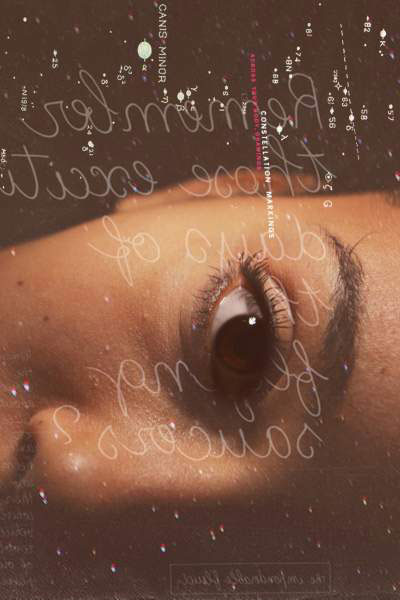All Nonfiction
- Bullying
- Books
- Academic
- Author Interviews
- Celebrity interviews
- College Articles
- College Essays
- Educator of the Year
- Heroes
- Interviews
- Memoir
- Personal Experience
- Sports
- Travel & Culture
All Opinions
- Bullying
- Current Events / Politics
- Discrimination
- Drugs / Alcohol / Smoking
- Entertainment / Celebrities
- Environment
- Love / Relationships
- Movies / Music / TV
- Pop Culture / Trends
- School / College
- Social Issues / Civics
- Spirituality / Religion
- Sports / Hobbies
All Hot Topics
- Bullying
- Community Service
- Environment
- Health
- Letters to the Editor
- Pride & Prejudice
- What Matters
- Back
Summer Guide
- Program Links
- Program Reviews
- Back
College Guide
- College Links
- College Reviews
- College Essays
- College Articles
- Back
Mary’s Monster by Lita Judge
Frankenstein.
Ever since its original publishing in 1818, the book has fascinated readers and critics around the world, sparking discussions about science and ethics, the importance of taking responsibility for your actions, and the question of what constitutes life. Over the years, the story has been adapted into, or become the inspiration for, numerous plays, movies, comic books, and more.
But who was Mary Wollstonecraft Godwin Shelley, the 18-year-old girl who created this iconic novel? Based on Mary’s own journals, Lita Judge has created a masterpiece of storytelling, using both writing and artwork. A seamless dance of haunting verse, and beautiful black and white illustrations that fluidly mix thought and reality, Mary’s Monster: Love, Madness, and How Mary Shelley Created FRANKENSTEIN paints a poignant picture of young woman trying to escape from oppressive societal expectations of female roles and female art; that will not be easily forgotten.
Mary Shelley’s mother, Mary Wollstonecraft, was an early feminist, most famous for her book A Vindication of the Rights of Women. She died shortly after Mary’s birth. Mary’s father, William Godwin, was a political philosopher and writer, known for his radical views of justice and belief in democracy. As a young girl, Mary loved to listen to the numerous philosophers, scientists, writers, and other intellectuals who would visit her father to discuss the issues of the day. One of these was Percy Bysshe Shelley, a poet with radical political and religious views, who nearly worshiped the work of both of Mary’s parents; and who Mary herself would eventually fall in love with. When Mary was 16, she and Percy ran away together (though he was already married and had a baby on the way), taking Mary’s stepsister, Claire Clairmont, with them. Mary hoped that she and Percy would be able to create a life together, away from the oppressive expectations of society, where they could create their art in peace.
However, Mary’s visions soon began to crumble. Her father disowned her due to her affair with Percy, a married man; and Percy himself began taking other lovers (including Mary’s step-sister, Claire), and talked of sending for his wife, Harriet. Mary and Percy’s first child lived only ten days, and their next two also died young. Mary was deeply hurt, both by Percy’s infidelity, and by his refusal to mourn their children. His opiate addiction, and unwillingness to even attempt to live in reality, frustrated her. When both Mary’s half-sister, Fanny, and Percy’s wife, Harriet, committed suicide within months of each other, Mary felt she was largely to blame.
It was during the summer of 1816, that Mary first conceived the idea of Frankenstein. She was staying in a castle on Lake Geneva with Percy, Claire, the infamously scandalous poet Lord Byron, and his personal physician, John Polidori. The year before, the Indonesian volcano Mount Tambora, had experienced a massive eruption, and the residual volcanic ash hanging in the air resulted in severe abnormal weather patterns. Crops failed, causing major food shortages in the Northern Hemisphere. For this reason, 1816 earned several grim nicknames with historians, namely Eighteen Hundred and Froze To Death, The Poverty Year, and The Year Without a Summer. It rained almost continually that year, and Mary and her companions thus spent most of their time stuck inside. The party often entertained themselves by telling ghost stories and discussing the latest scientific theories, as well as recent innovations and discoveries. Of particular interest to both Byron and Dr. Polidori, was possibility of reanimation. At a time when the Vitalism verses Materialism debate was raging in the scientific community, this idea was much debated. Judge’s book brilliantly illuminates how these ideas slowly began to take root in Mary’s mind, mingling with her feelings of loneliness, guilt, and abandonment; how this eventually became the beginnings of a classic novel; and how, ultimately, Mary herself was the inspiration for her “monster”.
I highly recommend Mary’s Monster to everyone who has ever read Frankenstein. It will give you a new understanding of and perspective on this classic novel that has inspired discussion for 200 years. It will give you insight into the fascinating life of one of history’s early female writers who is arguably the mother of the science fiction genre. It will show you that genius is not always something you are born with. Sometimes it is just something that arises out of personal experiences, yet still goes on to inspire the world.

Similar Articles
JOIN THE DISCUSSION
This article has 0 comments.
